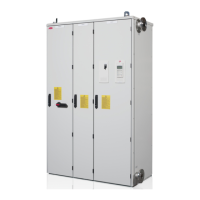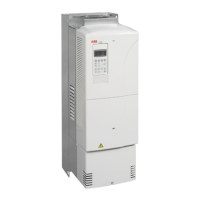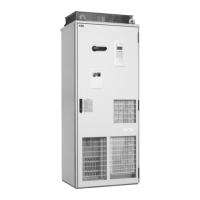Mechanical installation
55
Mechanical installation
What this chapter contains
This chapter describes the mechanical installation procedure of the drive.
Checking the installation site
See Ambient conditions on page 162 for allowable operating conditions, and
Dimensions, weights and free space requirements on page 152 for requirements for
free space around the unit.
The unit must be installed in an upright vertical position.
The floor that the unit is installed on must be of non-flammable material, as smooth
as possible, and strong enough to support the weight of the unit. The floor flatness
must be checked with a spirit level before the installation of the cabinets into their
final position. The maximum allowed deviation from the surface level is 5 mm in
every 3 metres. The installation site should be levelled, if necessary, as the cabinet
is not equipped with adjustable feet.
The wall behind the unit must be of non-flammable material.
Note: Wide cabinet line-ups are delivered as “shipping splits”.
Required tools
The tools required for moving the unit to its final position, fastening it to the floor and
tightening the connections are listed below.
• crane, fork-lift or pallet truck (check load capacity!); iron bar, jack and rollers
• Pozidrive and Torx (2.5–6 mm) screwdrivers for the tightening of the frame
screws
• torque wrench
• set of wrenches or sockets for joining shipping splits.

